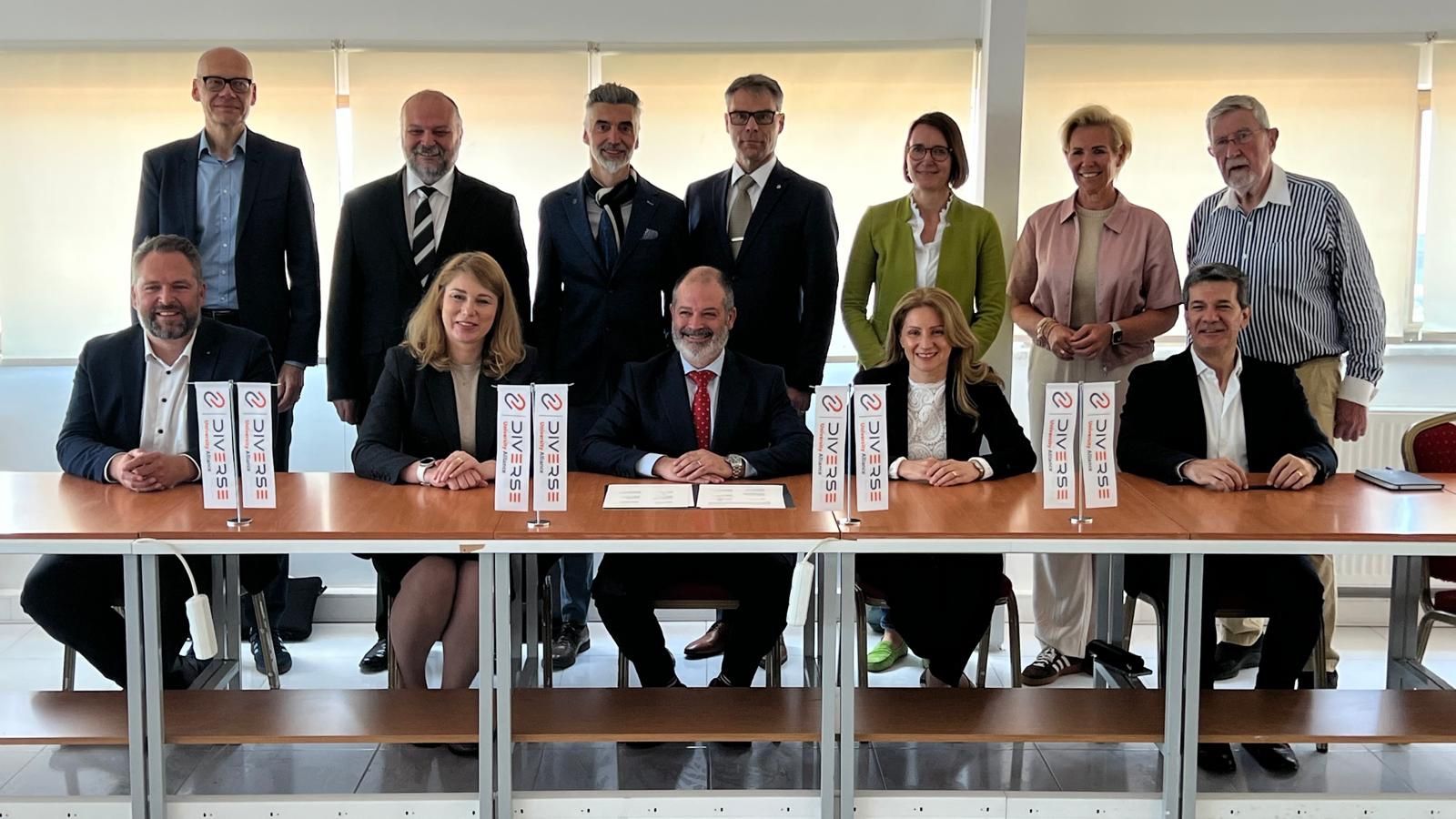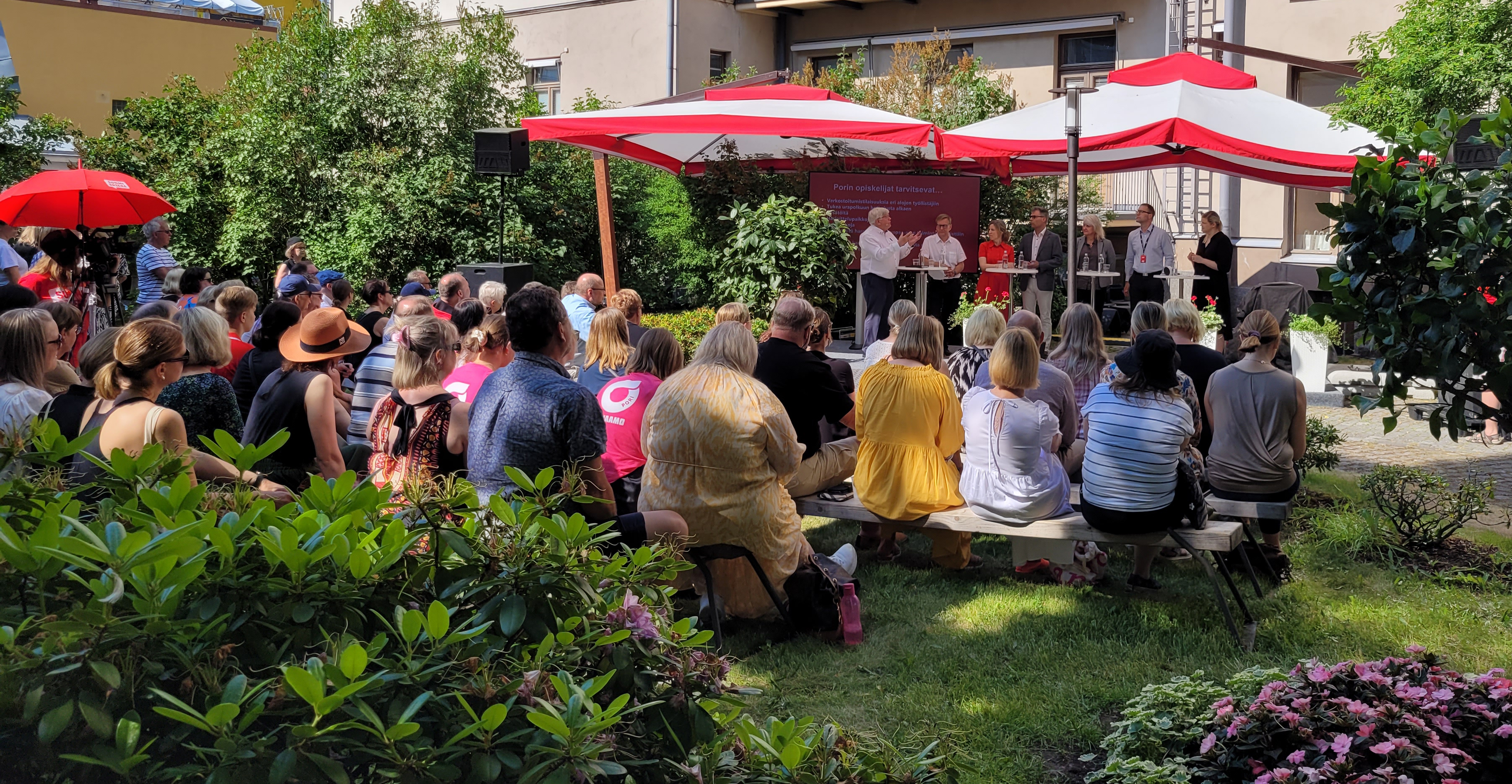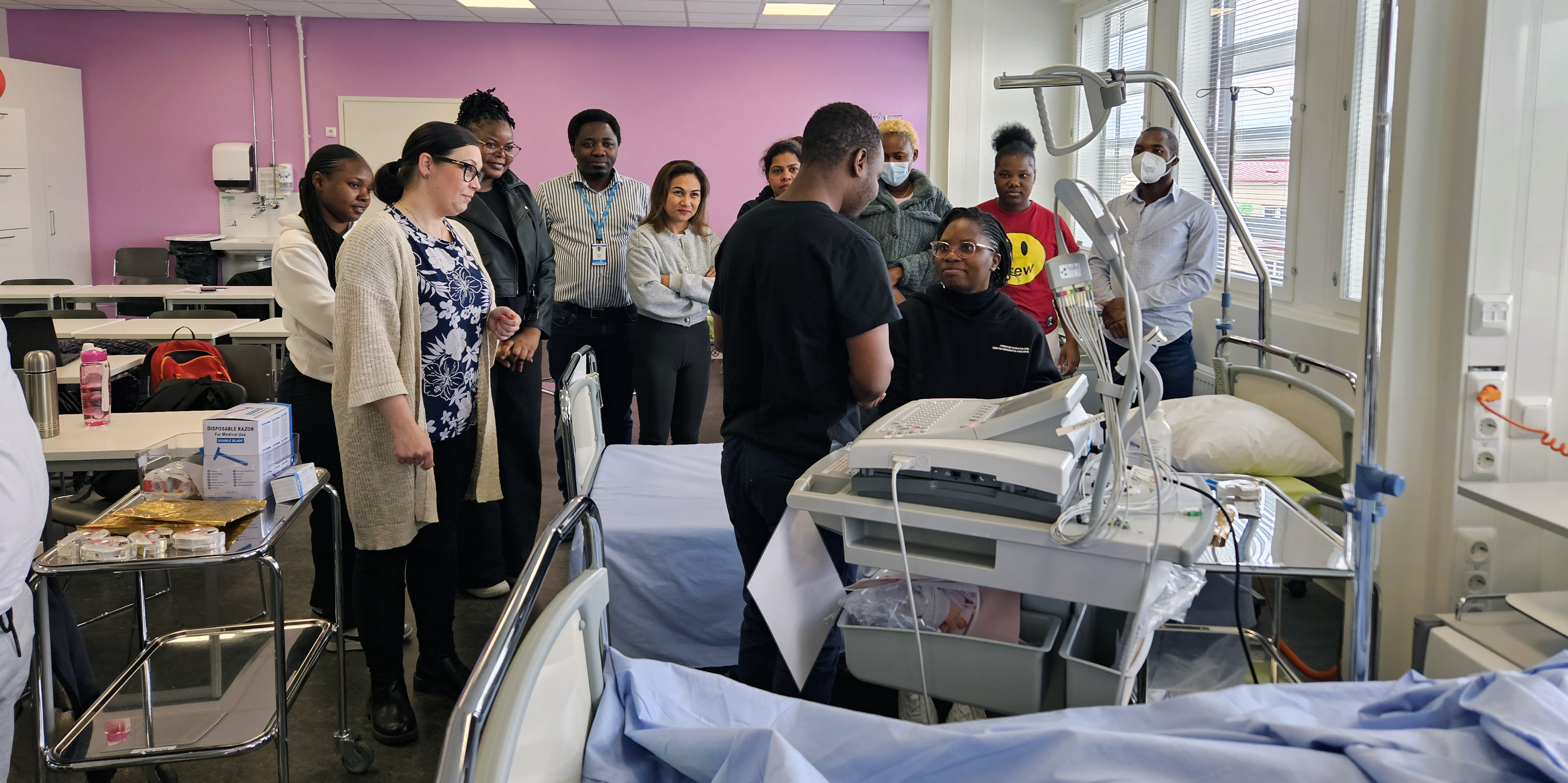Riika Mäkinen’s goal: Good indoor hygiene and saving the world from super microbes
SAMK FACES. Riika Mäkinen was just in Saudi Arabia introducing Finnish solutions to increase indoor hygiene at Global Ministerial Patient Safety Summit. Determined work has been done in IHMEC project to make people in the fields of e.g. construction and maintenance realize the importance of their everyday activities, and how microbiological healthiness of an indoor environment is influenced during the entire life cycle of a building.
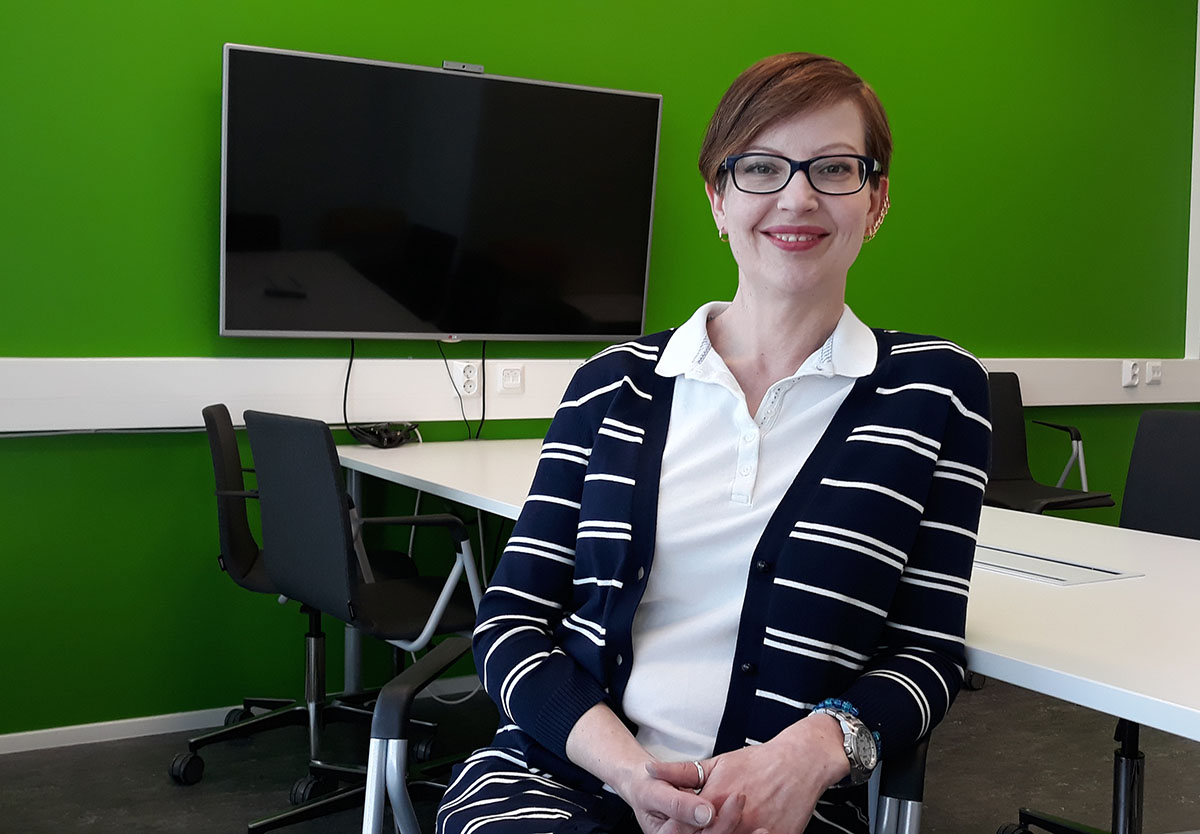
Riika Mäkinen in a meeting room at SAMK Campus Pori. The room itself is a research environment with its normal and antimicrobial furniture.
Mäkinen gave a presentation about the topic in Dubai in January, and was soon invited to the Summit in Saudi Arabia where IHMEC team has already been working for a year.
Riika is a chemist living in Pori, but originally from Rauma-Pyhäranta region. She has been working for WANDER Nordic Water and Materials Institute since 2007 on drinking water and indoor hygiene issues.
What do you do in WANDER?
I´m a Senior Researcher. I do research and project work, among other things project management. I assure that the project proceeds as planned. Almost everything I do at the moment is connected to indoor hygiene.
IHMEC project keeps me busy right now. In the project, the knowledge of indoor hygiene and hygienic construction is turned into comprehensive solutions suitable for export.
Indoor hygiene research in SAMK started as a Business Finland (former Tekes – The Finnish Funding Agency for Technology and Innovation) funded research project with sampling and analyses. In the following European Regional Development Fund project, business activities in the field of indoor hygiene were developed. The companies involved have realized the business potential of the new field right from the beginning. In the IHMEC project, the operations have reached the international level.
What´s going on?
In connection to hygiene and microbes, globally thinking, we are in a situation where we wait for the Disease X to emerge, in other words a disease for which we have no cure, for example antibiotics do not help. No one knows what the disease will be or when it will arrive but there´s a general consensus that it will emerge before long.
The major problems threatening people´s health are connected to super microbes, which are antibiotic resistant: they cause e.g. severe nosocomial infections. In addition, the fast global spread of infectious diseases caused by microbes is alarming, e.g. influenzas can spread from one continent to another in a few days.
Why have you targeted the Middle East?/ Why the Middle East?
It´s a combination of funding preconditions and companies’ interests. In a CB project, there has to be a target country outside the European Union, and the Middle East interests the companies. There are countries with an interest in developing their health care and also resources for it.
Finnish health care has been chosen as the best in the world in 2018, whereas in Saudi Arabia they have competence in managing infections in mass gatherings. We want to combine the knowledge of both countries; the goal is to enhance people´s wellbeing and decrease infections globally.
What is your mode of operation?
Our operations and value propositions are strongly based on the three indoor hygiene (Building Information) guidelines written in the previous Hygiene into Business (ERDF) project. The guidelines will soon be published also in English. The guidelines have been created for the whole life cycle of the building and they are directed at all the different actors in the building, e.g. designers, contractors, property developers, cleaners and maintenance personnel.
Our goal is that indoor hygiene is being enhanced during the entire life cycle of the building. The fact that the building has been designed and even constructed correctly does not guarantee correct usage. For example, it would be good to change the ventilation unit filter annually, but in practice it is changed every two years to save money or because there is no documented information on the change cycle. Unintentional carelessness can ruin indoor healthiness and cleanliness.
In Saudi Arabia, we have met e.g. opinion leaders and hospital representatives, the aim is to influence by raising awareness. A good operations model is to go forward with science first and only later present concrete corporate solutions. The companies have also noticed the functionality of this approach.
The project coordinator is University of Turku, Turku School of Economics, Pori Unit, and in addition to SAMK, there are partners also from Sweden and Estonia.
What interests you most right now?
Cooperation with companies, seeing the results of your own work quickly in the real world, outside the research community. For example, the Indoor Hygiene Guidelines are already used widely.
Besides, this is positively interesting because the importance of indoor hygiene will without doubt increase globally. The basic cornerstone of hygiene, good hand hygiene is clearly not enough. We need to find new means of preventing infections.
What kind of reception have you got in Saudi Arabia?
Saudi Arabia has been a lot more positive experience than what I expected. As an expert I am treated as equal, PhD seems to have a major significance. I haven´t felt being somehow inferior. Even the rules, like wearing an abaya, have been presented in a way that they are for my own good.
Saudi Arabia is challenging as it is a very closed country, especially as a target for export efforts. Companies and brands from the USA have taken over the market and the street scene quite efficiently, now we have to build confidence in Finnish competence. They do know Finland and e.g. our success in the evaluation of especially education and health care. We make a good, credible team with Marko Kukka from SAMK: Dr. Riika talks about indoor hygiene and microbes and Engineer Marko about solutions for the built environment and the lifecycle of buildings. We have for example managed to get a representative from an organization granting accreditations for Saudi hospitals to become a mentor for the project.
What´s the best part of working?
The best part at the moment is definitely my colleagues! We have a really good work community both at WANDER and SAMK, couldn´t ask for better. In connection to IHMEC and indoor hygiene, also project manager Tiina Mäkitalo-Keinonen from University of Turku, Turku School of Economics, Pori Unit, has to be mentioned. We have been working together since 2013 and we have become so welded together that we finish each other´s sentences. It´s been a pleasure working with Tiina and face the challenges of the Middle East together.
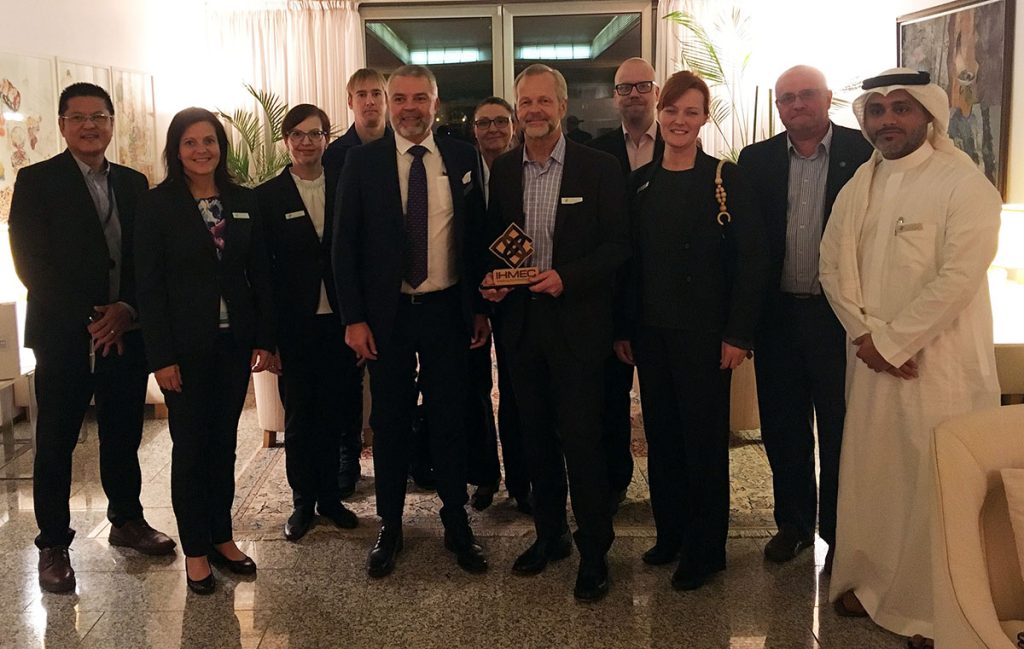
What is IHMEC?
Check the web pages of IHMEC Project
The conference that Riika participated in.
See also Saudi Gazette’s article
Photos taken during autumn 2018 IHMEC visit to Saudi Arabia.
